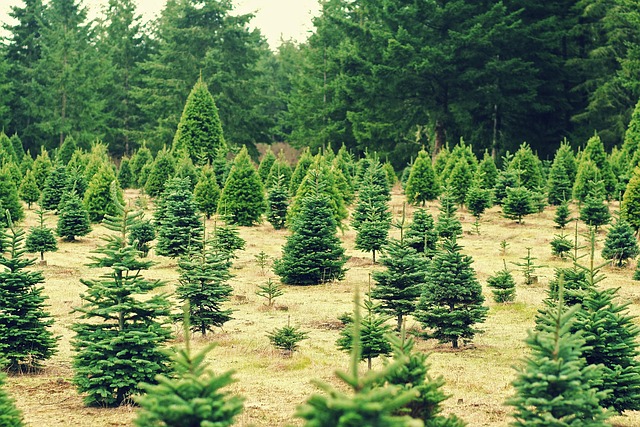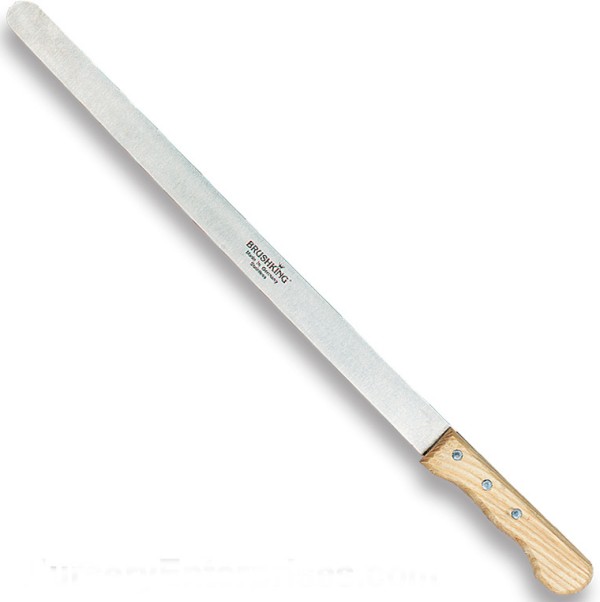
Indiana ranks eleventh nationally in the production of Christmas trees. There are approximately two hundred farms producing an average of about thousand Christmas trees annually. There is a map showing their locations on the website of the Indiana Christmas Tree Growers Association.
While growing Christmas trees in Indiana can be profitable, it requires a substantial amount of labor beyond just planting the seedlings in the spring. Mowing, spraying and mulching will probably be required to suppress competition from grass and weeds throughout the growing season. Animals such as mice, rabbits and deer may damage or kill young trees, so steps must be taken to minimize losses. Shearing during the early summer will be necessary to make sure the trees have a nice shape when sold. Shortly before Christmas, the trees will need to be harvested.
Laying Out the Plantation
On average, it takes seven years to grow a Christmas tree to a marketable heigh, which is six to seven feet. Since you will want to sell some each year, your acreage should be split into seven blocks, planting new seedlings in one block each spring. The spacing between your trees will be determined by your mowing equipment, but typically somewhere around seven feet apart. Keep in mind that when a tree gets to be six feet tall, it will be about four feet in diameter at the base. With seven foot spacing between trees, you can plant nearly nine hundred trees per acre.
Selecting and Planting Your Christmas Tree Seedlings
Scotch pine (Also called Scots pine or Baltic pine) and white pine are the most commonly grown Christmas trees in Indiana. While spruces and firs can be grown here, they are better adapted to cooler regions. White pine Christmas trees will sell for a slightly higher price, but Scotch pine are much easier to grow. When starting your Christmas tree operation, focus on Scotch pine first, and try only a small number of white pine. Since Scotch pine will grow on poorer soil, plant your white pine in your most fertile soil. Scotch pine also tolerates dry conditions somewhat better.
The two most common varieties of Scotch pine are East Anglia and Scotch Highland. There isn’t a lot of difference between the two, although the East Anglia has slightly longer needles (Approximately three inches versus two inches). Because of this, some growers recommend East Anglia for windbreaks and Scotch Highland for Christmas trees.
We recommend planting bare root seedlings, since they can be purchased cheaply and planted quickly. This is most efficiently done with a planting bar. For information on how to use a planting bar, please visit our black locust firewood page and check the “Planting Your Acreage” section.
Shearing Trees to Maintain Their Shape

For the first few years, there will be little need to do any trimming. You will need to remove any dead or broken branches. If any trees develop double leaders, one of them must be removed. After three to four years, shearing will be required to maintain a conical shape so each tree will fetch a good price. The ratio of width to height should be two-thirds. A tree six feet tall should be approximately four feet wide at its base. A tree seven and a half feet tall should be five feet wide.
Pines should be sheared between the middle of June and early July. This is typically done with a shearing knife, which is usually a wooden-handled knife with a sharp blade slightly over a foot long. They are available from a number of manufacturers and retailers. The one shown here is from Brushking.
This video shows an experienced shearer using two at a time, which we do not recommend for beginners. We also recommend wearing a leg guard, since these knives are very sharp and it is quite easy to accidentally trike your leg.
Harvesting Christmas Trees for Sale
If you sell your trees wholesale, you will need to line up a buyer well before the Christmas season, You will need to hire people to harvest your trees in a short amount of time and ship them out. It’s probably best to sell them to the public, and have your business open on the weekends between Thanksgiving and Christmas. Most farms offer pre-cut and cut your own options. Many vendors bring in a food truck and make it a festive event. You can also try selling items like wreaths and ornaments. For more ideas, check out the website of the St. Joseph Christmas Tree Farm near Fort Wayne.
Indiana Christmas Tree Farms
Here are some additional Christmas tree farms currently operating in Indiana:
Piney Acres Farm (Fortville) sells pre-cut and cut your own trees. Species include Scotch and White pines, Cananaan, Concolor, Douglas and Nordman firs, as well as Norway and Colorado blue spruces. In addition to their Christmas trees, they also have a corn maze and other fall fun activities.
Happy Goat Christmas Tree Farm (Fort Wayne) sells four species of firs (Fraser, Concolor, Douglas and Canaan) and Black Hills Spruce. During the summer they host children’s birthday parties, and have a pavilion that can be rented. In addition to their trees, they have a variety of animals, including goats (naturally), chickens, alpacas and miniature horses.
Cassens Trees (West Lafayette) offers Scotch and White pine, plus Fraser, Canaan, Douglas and Concolor firs. If you are looking for a large tree, they have them up to twelve feet tall. Be prepared to pay up, since trees this big take longer to grow, so they will cost more.
